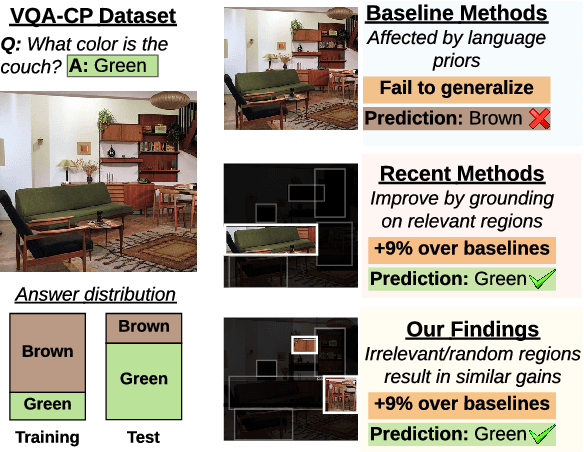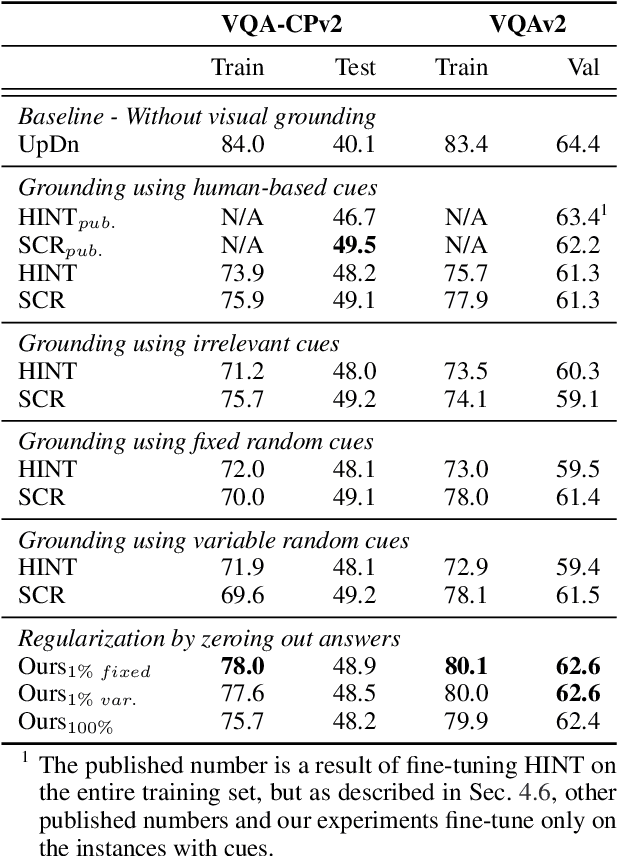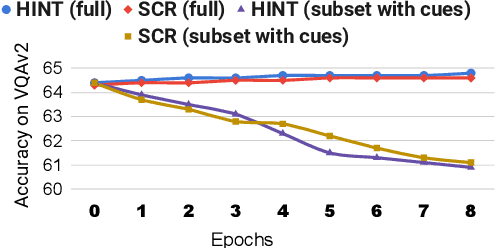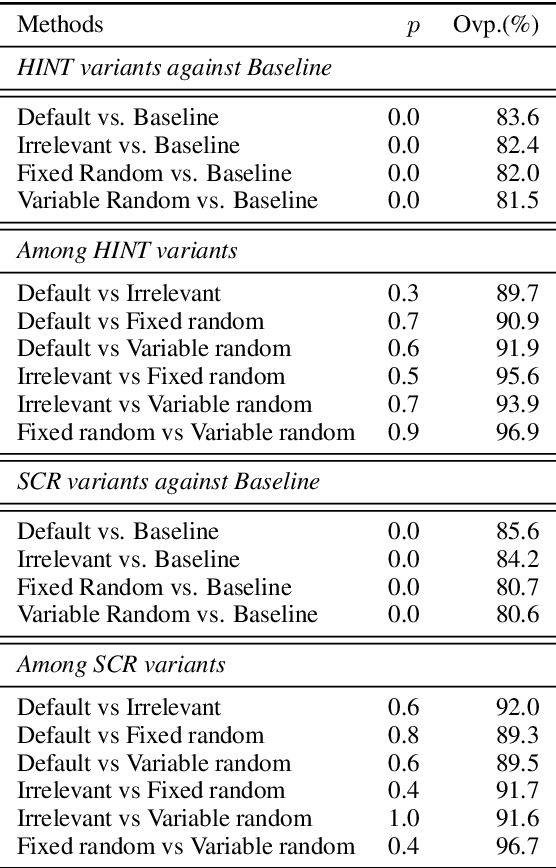A negative case analysis of visual grounding methods for VQA
Paper and Code
Apr 15, 2020



Existing Visual Question Answering (VQA) methods tend to exploit dataset biases and spurious statistical correlations, instead of producing right answers for the right reasons. To address this issue, recent bias mitigation methods for VQA propose to incorporate visual cues (e.g., human attention maps) to better ground the VQA models, showcasing impressive gains. However, we show that the performance improvements are not a result of improved visual grounding, but a regularization effect which prevents over-fitting to linguistic priors. For instance, we find that it is not actually necessary to provide proper, human-based cues; random, insensible cues also result in similar improvements. Based on this observation, we propose a simpler regularization scheme that does not require any external annotations and yet achieves near state-of-the-art performance on VQA-CPv2.
 Add to Chrome
Add to Chrome Add to Firefox
Add to Firefox Add to Edge
Add to Edge